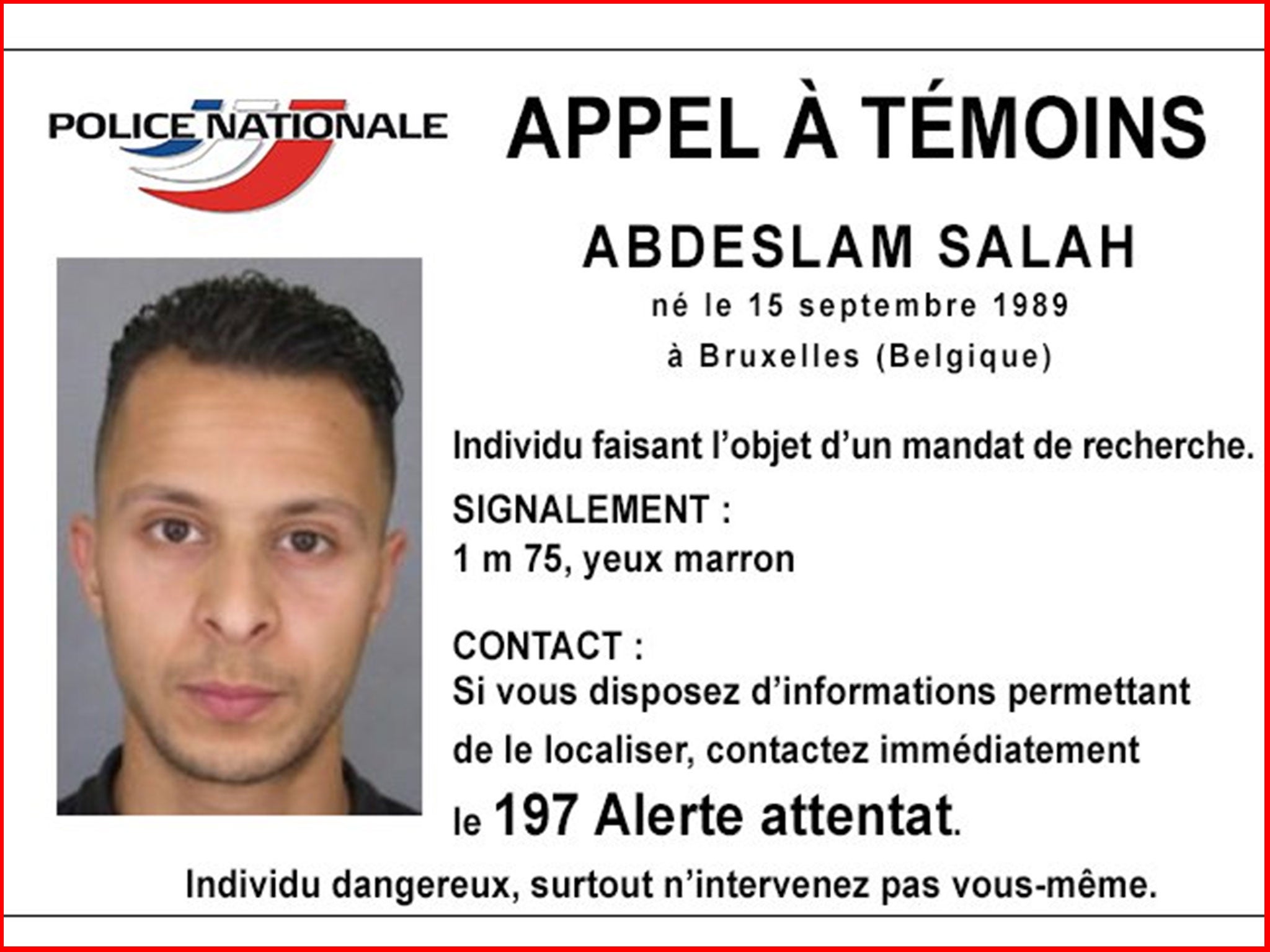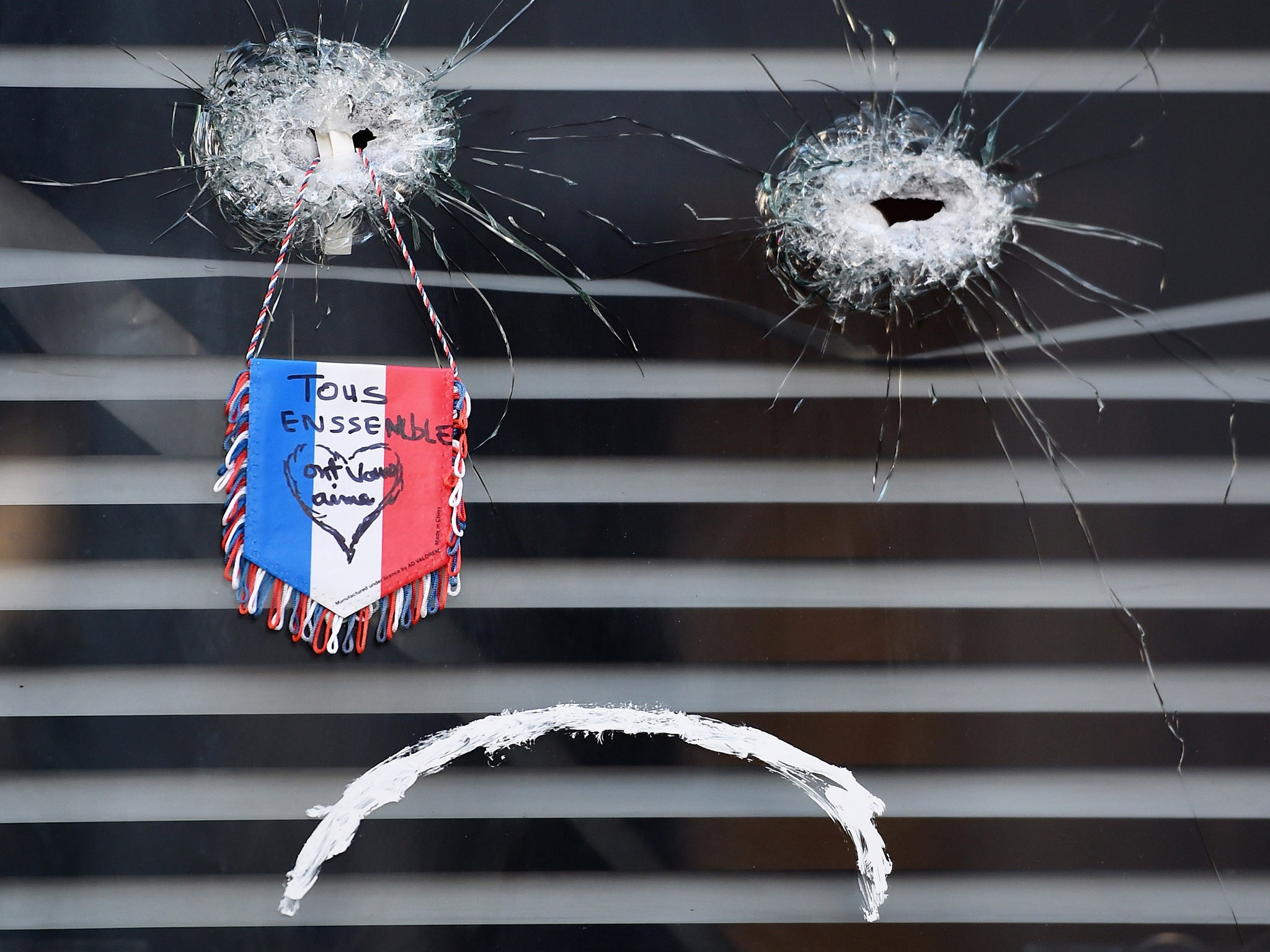Paris attacks: First trace of Salah Abdeslam found in Brussels flat where suicide belts may have been made
Bomb-making material was found at a flat alongside the fugitive's fingerprint

Your support helps us to tell the story
From reproductive rights to climate change to Big Tech, The Independent is on the ground when the story is developing. Whether it's investigating the financials of Elon Musk's pro-Trump PAC or producing our latest documentary, 'The A Word', which shines a light on the American women fighting for reproductive rights, we know how important it is to parse out the facts from the messaging.
At such a critical moment in US history, we need reporters on the ground. Your donation allows us to keep sending journalists to speak to both sides of the story.
The Independent is trusted by Americans across the entire political spectrum. And unlike many other quality news outlets, we choose not to lock Americans out of our reporting and analysis with paywalls. We believe quality journalism should be available to everyone, paid for by those who can afford it.
Your support makes all the difference.Police have found what could be the bomb-making factory "hideout" used by the jihadists who carried out the Paris terror attacks.
Belgian investigators think explosives used in the attacks in Paris in November may have been made in an apartment in Brussels that was rented under a false name and where a fingerprint of a key fugitive was found.
A fingerprint belonging to Paris attacks fugitive Salah Abdeslam has been found at a flat in Brussels where police believe explosive belts may have been manufactured.
Searches were initially carried out at the third-floor apartment in Schaerbeek on 10 December. Analysis has now revealed traces of bomb-making materials.
“Material that can be used to fabricate explosives as well as traces of TATP (acetone peroxide) were found,” a statement from the Belgian federal prosecutor said.
“This apartment was rented under a false identity that might have been used by a person already in custody in this case.
“Three handmade belts that might be used to transport explosives as well as a fingerprint of Salah Abdeslam were also discovered.”
It was unclear whether the fingerprint was left before or after the Paris attacks but Belgian media said it was likely to be afterwards, meaning Abdeslam may have used the flat as a hideout.
“It is possible that it was there before the attacks but that seems doubtful because the apartment had evidently been cleaned and checked for fingerprints,” De Standaard reported.

“Investigators therefore assume that Abdeslam has stayed there after his flight from Paris.”
Abdeslam, whose brother Brahim blew himself up during the Paris attacks, is still on the run after disappearing following the terrorist massacres that killed 130 people on 13 November.
Ten suspects have so far been detained by the Belgian authorities on terrorism charges connected with the attacks. Much of the focus has previously been on Molenbeek, a run-down Brussels district that has long harboured jihadist terrorists.
Schaerbeek is a more gentrified district in the north-east of Brussels, and the raids took place near one of the capital’s most lavish avenues. While Molenbeek has a high concentration of Moroccan-origin Muslims – heavily represented amongst the Paris attacks – Schaerbeek has a small but significant community of Turkish and Balkan Muslims.
Meanwhile, French investigators are struggling to confirm the identity of the young man shot dead when he approached a police station in Paris on Thursday wearing a fake explosives belt.
Acetone peroxide is a common ingredient in improvised explosive devices used by terrorist groups around the world because of its low cost and relative ease to obtain.
It may have been one of the key components in the suicide vests that the Paris attackers wore at the Stade de France, Bataclan and bars and restaurants, where they sprayed diners with bullets before blowing themselves up.
An explosive belt was found dumped in a bin in the southern Paris suburb of Montrouge 10 days after the atrocity, near where Abdeslam was traced to on the night.
The discovery fuelled speculation that he was supposed to be among the suicide bombers but abandoned the plan and fled to Brussels, where two men have been charged with driving him in the early hours of the following morning.
An international arrest warrant is out for Abdeslam, who friends say could also be hiding from Isis after he reportedly told them he had “gone too far” following the terrorist group.
Join our commenting forum
Join thought-provoking conversations, follow other Independent readers and see their replies
Comments